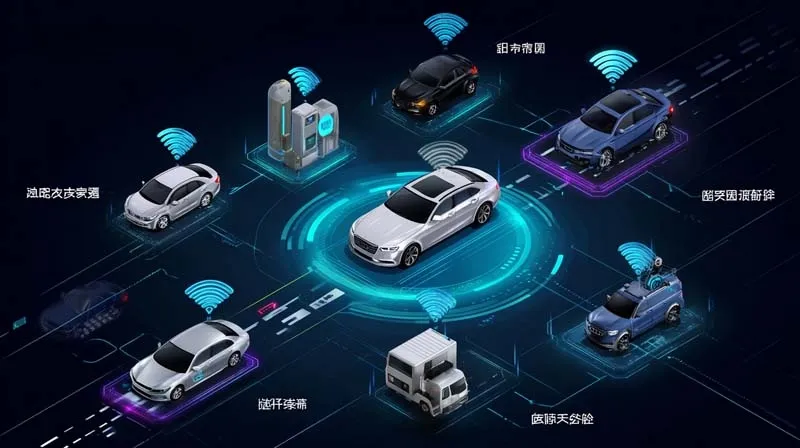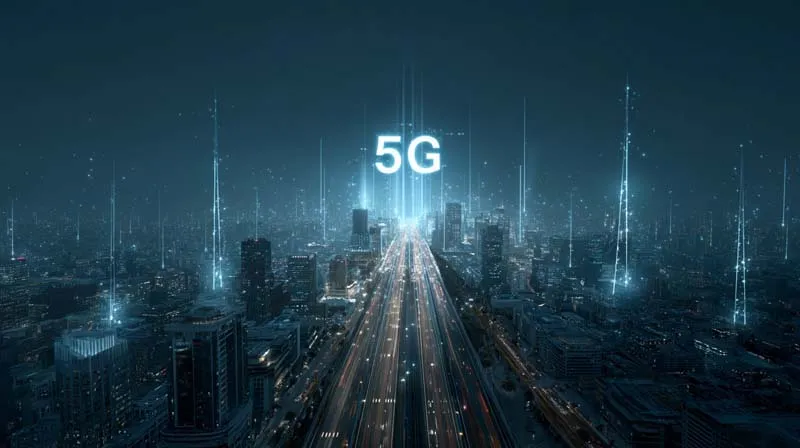In the wave of global automotive digital transformation, Automotive IoT (IoV) has become the core engine of future mobility. Vehicles become networked nodes. Communication networks form the backbone. People, vehicles, roads, and clouds connect seamlessly. This creates an intelligent, efficient, and integrated mobility ecosystem. With the power of 5G, Automotive IoT is breaking its limits, enabling high-precision positioning, ultra-low latency, and real-time massive data exchange.
1. The Rise and Background of Automotive IoT
Over the past decade, the automotive industry has moved from mechanical and electronic control to intelligent and connected systems. Early telematics only offered navigation, remote control, and entertainment. Today, Automotive IoT penetrates the core of vehicle sensing, decision-making, and control. Vehicles are no longer just transport tools. They are mobile intelligent terminals, connected to urban traffic and energy networks.
Market data shows the Automotive IoT market is growing at double-digit rates. The US and Europe lead in autonomous driving and traffic standards. China, with its massive new energy vehicle base and advanced 5G infrastructure, is emerging as a hub of IoV innovation. Policies, investments, and technology advances are driving the industry to a critical point of rapid adoption.

2. 5G-Powered Technology Leap
5G’s high bandwidth, low latency, and massive connectivity bring a new era for Automotive IoT.
High-precision positioning
Combining 5G with BeiDou and GPS reduces positioning errors from meters to centimeters. This is critical for autonomous driving, V2X, and smart scheduling. Accurate positioning improves navigation and supports safety decisions in complex road environments.
Low-latency communication
5G reduces network latency to milliseconds. This enables real-time control and instant response. V2V, V2I, and V2C communications become safer and more reliable.
High bandwidth and multi-device capacity
Modern vehicles integrate dozens of sensors, cameras, and radars. Data volume is massive. 5G handles multiple high-definition video streams and parallel tasks with stable performance.
3. Applications and Commercial Progress
Autonomous driving and ADAS
With 5G and AI, vehicles can perceive, plan, and decide in real time, even in complex traffic. Global automakers and telecom operators are testing autonomous driving on open roads.
Smart traffic and V2X
Automotive IoT connects with city traffic systems to adjust signals dynamically, sense traffic in real time, and trigger accident alerts. This improves road efficiency and reduces accidents and emissions.
Remote operation and data services
IoV enables health monitoring, remote diagnostics, and OTA upgrades. Driving data supports personalized insurance and smart after-sales services, creating new revenue streams.
4. Cross-Border Challenges and Bottlenecks
Roaming complexity
Cross-border driving faces network differences and roaming delays. Data interruptions affect safety and monitoring. Roaming fees raise costs for logistics fleets.
Fragmented regulation
Countries have different data sovereignty and privacy rules. For example, some Chinese EVs still rely on 4G SIM cards abroad to meet diverse regulatory needs. This regulatory fragmentation limits global IoV interoperability.
Uneven industry ecosystem
Automakers, telecoms, and sensor suppliers must align standards and share value. Ecosystem maturity determines the speed and scale of IoV deployment.

5. Solutions and Future Trends
Technology
Adopt multi-mode communication modules integrating 4G, 5G, and satellite. Promote cross-border IoV roaming standards to reduce switching risks.
Policy and cooperation
Align regulatory frameworks internationally. Build alliances to share infrastructure and data platforms.
Future trends
5G-A and 6G will cut latency further and expand connectivity. The focus will shift from single-vehicle intelligence to fully networked traffic intelligence. Automotive IoT will become the nervous system of smart cities.
Automotive IoT is the strategic high ground of the next automotive revolution. 5G gives vehicles the power to sense, decide, and interact on a global scale. Challenges remain in roaming and regulation, but technology and cooperation will clear these barriers. As ecosystems mature, Automotive IoT will redefine global transportation—making it safer, faster, and greener.
EELINK Communication is a high-tech enterprise dedicated to applying wireless communication technology to the Internet of Things (IoT). With over 20 years of experience in IoT hardware and software development, our products cover remote monitoring platforms for temperature and humidity, with applications in asset management, vehicle anti-theft, insurance, and cold chain logistics. We are driven by a mission to connect everything through innovative smart technology. By delivering efficient, reliable solutions, we create long-term value for customers while meeting the evolving demands of the IoT era.
